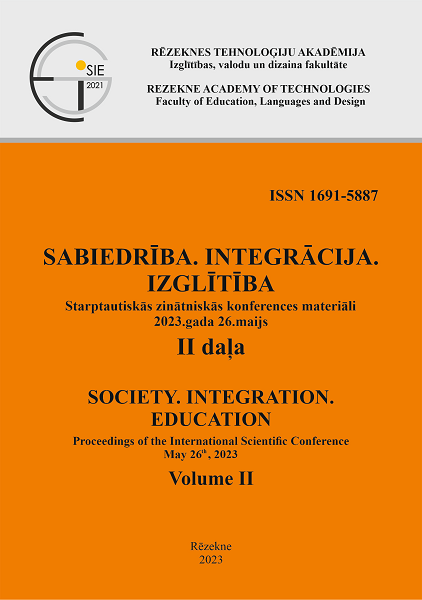CONTACTLESS PAYMENTS FRAUD DETECTION METHODS AND IS SOCIETY PREPARED TO RESIST: A CASE STUDY
DOI:
https://doi.org/10.17770/sie2023vol2.7159Keywords:
credit cards, contactless payment, data mining, fraud, unsupervised learningAbstract
The ability to use contactless payment technologies, non-cash payments and credit card payments is becoming almost an essential requirement for consumers and merchants in today's economic conditions. Different market sectors are rapidly adapting to these technologies and looking for the most convenient, secure, and fastest possible solutions that combine intelligent data processing, security, and business management functions. Millions of debit and credit card holders care about secure payments, the businesses that receive these payments are secure in terms of security, and the operators that process such incoming and outgoing payments are interested in innovative solutions that set them apart from the competition. Amid the COVID-19 pandemic, when e-commerce was growing exponentially, the global market for fraud detection and prevention, currently stands at USD 20.9 billion, and is expected to grow, until 2025 will rise to USD 38.2 billion by the end of the year; holds the market at 12.8 % annually. The US remains the dominant region in this market segment, but European countries are also increasingly investing in fraud prevention and detection solutions, which are growing in demand in Europe due to an increase in cybercrime as well as advanced bots and cyber-attack.
References
An official website of the United States government. Retrieved from: https://www.fbi.gov/scams-and-safety/common-scams-and-crimes/credit-card-fraud
Carcillo, F., Pozzolo, A. D., Le Borgne, Y.-A., Caelen, O., Mazzer, Y., & Bontempi, G. (2018). Scarff: A scalable framework for streaming credit card fraud detection with spark. Information Fusion, 41, 182-194.
Carneiro, N., Figueira, G., & Costa, M. (2017). A data mining based system for credit-card fraud detection in e-tail. Decision Support Systems, 95. Retrieved from: https://www.sciencedirect.com/science/article/abs/pii/S0167923617300027#ab0005
Cherif, A., Badhib, A., Ammar, H., Alshehri, S., Kalkatawi, M., & Imine, A. (2023). Credit card fraud detection in the era of disruptive technologies: A systematic review. Journal of King Saud University – Computer and Information Sciences, 35, 145-174.
Eshghi, A., & Kargari, M. (2019). Introducing a new method for the fusion of fraud evidence in banking transactions with regards to uncertainty. Expert Systems with Applications, 121.
Experian Information Solutions. (n.d). Retrieved from: https://www.experian.com/
Halvaiee, N. S., & Akbari, M. K. (2014) A novel model for credit card fraud detection using Artificial Immune Systems. Applied Soft Computing, 24, 40–49.
Jha, S., Guillen, M., & Westland, J. C. (2012). Employing transaction aggregation strategy to detect credit card fraud. Expert systems with applications, 39(16), 12650-12657.
Mahmoudi, N., & Duman, E. (2015). Detecting credit card fraud by modified Fisher discriminant analysis. Expert Systems with Applications, 42(5), 2510-2516.
Mason, S., & Bohm, N. (2017). Banking and fraud. Computer Law & Securit review 33(2), 237-241.
Olszewski, D. (2014). Fraud detection using self-organizing map visualizing the user profiles. Knowledge-Based Systems, 70, 324–334.
Pourhabibia, T., Ongb, K.-L., Kama, B. H., & Boo, Y. L. (2020). Fraud detection: A systematic literature review of graph-based anomaly detection approaches. Decision Support Systems, 133, 113303.
Roseline, J. F., Naidu, G. B. S. R., Pandi, V. S., alias Rajasree, S. A., & Mageswari, N. (2022). Autonomous credit card fraud detection using machine learning approach. Computers and Electrical Engineering, 102, 108132.
Starbuck Gerson, E. (2023). Steps to Take if You Are the Victim of Credit Card Fraud. Retrieved from: https://www.experian.com/blogs/ask-experian/credit-education/preventing-fraud/credit-card-fraud-what-to-do-if-you-are-a-victim/
Velampalli, S., Eberle, W. (2017). Novel graph based anomaly detection using background knowledge. Proceedings of flairs, AAAI Press.






